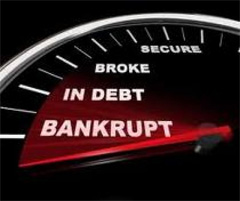P&G Saw Faster Sales Growth in Low End Since 2008
The Wall Street Journal article says that "In late 2008, unit sales gains of P&G's cheaper brands began outpacing its more expensive lines despite receiving far less advertising. As the recession wore on, U.S. market-share gains for P&G's cheaper Luvs diapers and Gain detergent increased faster than its premium-priced Pampers and Tide brands."
Gain detergent is a product released in 2010 that can sell for as little as 50% less per ounce than its more premium brands.
Lower prices, no-name brand competitors were eating into P&G's market share in a number of areas. For example, P&G's dominant fabric-softener sheets business, including its Bounce brand, saw a market share drop of 5 percentage points to 60.2%, from 2008 to 2011 as sales by lower-priced options from Sun Products Corp. and private-label brands increased.
The Gini Index Tells the Tale
P&G is among a growing number of companies that take a look at the "Gini index," developed by Italian mathematician Corrado Gini early in the 20th century, and which measures income inequality. In this index, if income in a country was distributed perfectly even, the score would be zero. Perfect inequality would result in a score of 100.
The US CIA actually tracks Gini scores by country, though much of the data is from a few years ago or more, as can be found here: CIA's Gini Score Numbers by Country.
 In 2009, the most recent calculation available, the Gini coefficient totaled 0.468, a 20% rise in income disparity over the past 40 years, according to the U.S. Census Bureau. In 2009, the most recent calculation available, the Gini coefficient totaled 0.468, a 20% rise in income disparity over the past 40 years, according to the U.S. Census Bureau.
"We now have a Gini index similar to the Philippines and Mexico—you'd never have imagined that," says Phyllis Jackson, P&G's vice president of consumer market knowledge for North America. "I don't think we've typically thought about America as a country with big income gaps to this extent."
The recognition of this reality has led P&G to significantly change its R&D, product development, and go to market strategies.
The Wall Street Journal says that globally, "P&G divides consumers into three income groups. The highest-earning "ones" historically have been the primary bracket P&G chased in the U.S. as they are the least price sensitive and most swayed by claims of superior product performance. But as the "twos," or lower-income American consumers, grew in size during the recession, P&G decided to target them aggressively, too. P&G doesn't specifically target the lowest-income "threes" in the U.S., since they comprise a small percentage of the population and such consumers are typically heavily subsidized by government aid."
Obviously, there are supply chain implications to all this, as not only production costs need to be pared to meet the price points needed to reach this lower income consumer, but even decisions around transportation and inventory levels may need to be rethought. For example, the lower cost of inventory holdings for lower priced products might change the curve for them relative to inventory-transportation trade-offs.
P&G is also trying to bring out more premium products for the high end - but that strategy contains its own supply chain challenges.
"We do big volumes of things really well," said Bruce Brown, P&G's chief technology officer. "Things that are smaller quantities, with high appeal, we're learning how to do that."
What is your take on this story of how P&G is changing its product strategy? Is your company adopting anything similar to this high/low strategy? What are the supply chain implications? Let us know your thoughts at the Feedback button below.
|